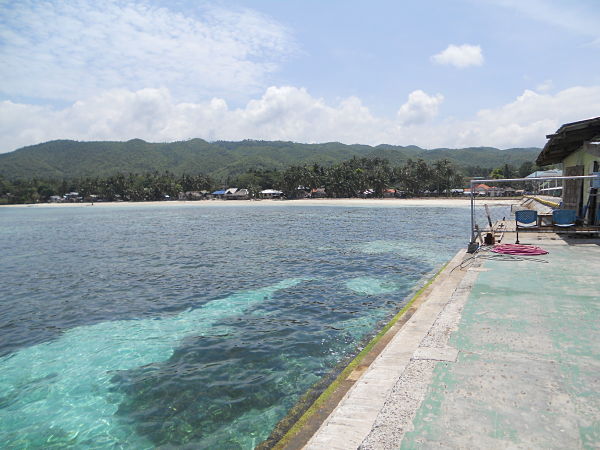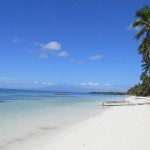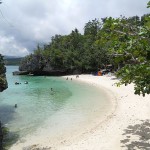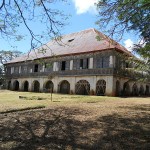In Filipino folk culture, if you want someone to fall in love with you, or if you want to cause someone harm to avenge an offense, you go to a sorcerer who brews a potion to your desired effects. (Or, if you want to put live fish to sleep so they can be transported over long distances without water, just ask a Siquijodnon inventor how he did it.) Such practices are still extant even in “civilized” areas, but if generations of long ago were to be believed, Siquijor is sorcery central.
Whether true or not, mysticism is alive and well among Filipinos despite their affinity for everything iOS. We haven’t really abandoned indigenous beliefs, rituals and practices when we were made to embrace the Catholic cross by the Spanish. We just accommodated Catholic doctrine alongside our traditional belief systems, and the same is happening with our accommodation of the pervasiveness of digital living while we hold on to our Catholic beliefs. Sociologists refer to this dynamic as “syncretism” wherein a society does not totally abandon its past but makes room for the present and make the two of them coexist peacefully. And it is in Siquijor where syncretism, in all its varied forms, is manifest.
Below is a photo introduction to this island – floating all by itself and with nary a care in the world.
The Map of Siquijor
Siquijor is dwarfed by its Visayan cousin, the hulking island of Negros to the northwest, and the islands of Cebu and Bohol to the north and northeast. To its south is the group of intimidating islands of Mindanao. It is a diminutive province composed of six municipalities, one of which is its namesake, the municipality of Siquijor. All of the province’s 102-kilometer coastline and 75-kilometer highway you can “circumnavigate” in under three hours in leisurely tricycle ride. (In travel speak, you can sneak Siquijor into your itinerary as a day trip. I did it painfully slow in four days.)

The port of Siquijor, Siquijor
The port of Siquijor (which is different from the port of the municipality of Larena to the east) is reputed to be one of the cleanest, if not the cleanest, in the Philippines. Right off the port, I was welcomed by a school of colorful fish swimming in sparkling cerulean waters.
White sand beach right off Siquijor port
Right off the bat, Siquijor is obviously snorkeling and diving mecca. (White sand beaches are a dime a dozen in my hometown, Negros – so they don’t shock-and-awe me. But a white sand beach teeming with seaweeds and coral patches right off the port?)
San Franciso de Asis Church
The 1783 St. Francis of Assisi Church welcomes visitors to the province of Siquijor.
Siquijor Municipal Hall
A small town hall for a small town. Siquijor’s municipal administrative seat is an unassuming piece of block hidden from plain sight by the non-descript covered court beside it.
Tricycles are Siquijor’s primary mode of transport
Tricycles are more ubiquitous in Siquijor than any other form of transport, for a simple reason: Competition from multi-cabs is few, and competition from big buses non-existent.
Tricycles ply lonely roads like this
If there is one word that describes Siquijor best, it is “quiet.” Noise pollution from motorized conveyances is minimal. (Outside of town centers, the silence is literally deafening.) Minutes tick by before you can spot another wheeled vehicle passing through. That said, public transport in Siquijor typically ceases at 6PM, except on Fridays when teachers and students seem to be going home later than usual. (I had to walk a long distance from San Juan back to Siquijor shortly after 6PM before I flagged down a hesitant tricycle.) The wiser option is to rent a tricycle or a motorcycle (if you know how to drive). It should not cost more than US$25 and US$12, respectively (including gratuities).
An intricately designed old house in Siquijor
If there is one theme recurring in Siquijor, it is the “syncretism” of still-functional century-old-houses and new ones constructed by families who are either doing well in business or have relatives working abroad or expatriates trying to settle down in the island.
Another old house in Maria
Wooden houses still stand for every four or five houses I passed by. I counted.
Sunset seen from Siquijor Boulevard
The setting sun is not visible from the municipality of Siquijor which is pictured above. For really dramatic sunsets, San Juan is the place to be.
Click here for next article (Siquijor series) – >>
Explore the rest of the world
More from my site
Article by Chris
Chris had a passion to contribute to society especially to fellow travelers like himself. He also had a passion for Southeast Asia and frequently visited. While brainstorming ideas, he decided that a travel blog dedicated to his favorite countries, Thailand and Singapore, could be more beneficial than any guidebook. Only one year later did the blog’s success bring in more writers, more countries, and more readers.
- Google+ |
- More Posts (327)
Help others get the information they need by liking or sharing our page!
Follow @followloveblab Travel:Your keys to freedom, adventure & discovery
Travel:Your keys to freedom, adventure & discovery



